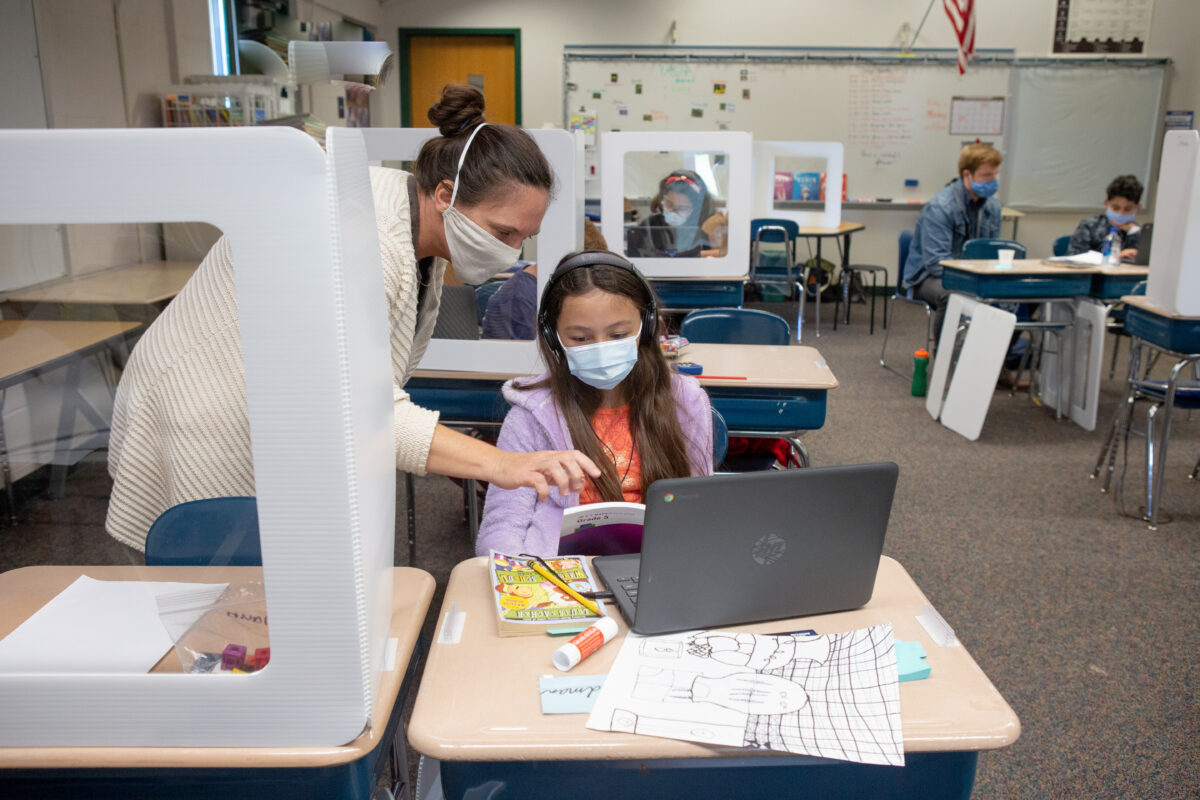NOTE: With permission of thanks to Kim Marshall of “The Marshall Memo,” a summary of my recent article with Holly Marich is shared here.
Helping Elementary Students As They Use Digital Writing Prompts
In this article in Language Arts, Holly Marich (a Nevada professional development coordinator) and Troy Hicks (Central Michigan University) suggest ways that elementary teachers can help students make the best use of word processing tools like spell check, autocorrect, predictive text, automatic grammar feedback, and voice dictation. “Many educators bemoan digital technology as an unnecessary distraction or even a sophisticated form of cheating,” say Marich and Hicks. “But it’s important to recognize that the choices these tools force writers to face matter, both for writers and for writing instructors.”
Marich spent time in a second-grade class in which the teacher regularly gave students the opportunity to write two sentences in the class’s Twitter account on what they were learning, why they were learning it, how they would use the information, and questions they wanted to ask. The teacher checked students’ tweets before they were posted and conducted individual mini-lessons on usage and content as she circulated. Marich observed a number of “micro-moments” when students got digital feedback on their tweets. Four examples:
- A student started to write This and the predictive feature inserted The. The boy deleted the whole word and took a few moments correctly typing This and completing his sentence. He needed help dealing more quickly with the predictive text suggestion.
- A student decided to use the iPad’s speech recognition feature (he’d learned about it on his grandmother’s computer) and quickly found the correct spelling of the word giraffe. Some students may bring sophisticated knowledge to the classroom and teachers need to teach when it’s allowed and appropriate.
- A student misspelled a word in her tweet, got the correct spelling from Marich, then chose to ignore at least one incorrect predictive-text prompt – peas for piece. This student needed more teacher guidance on spotting words incorrectly suggested by the predictive feature.
- A student spelled lizard incorrectly – first listed, then liserd – and spent several minutes brainstorming about possible words, ultimately finding the correct one. In the process she thought creatively about her reptile project.
Marich and Hicks acknowledge that it’s impossible for a teacher to be looking over every student’s shoulder and providing everyone with just-in-time suggestions. But teachers can give some general words of wisdom for students as digital tools pop up during their writing, encouraging them to ask themselves:
- What do I know about the sound or letter that’s being suggested?
- Do I like this word choice?
- Do I agree with this suggestion?
- What do I as a writer plan to do with this information?
“These are genuine dialogues with students that help them think deeply about their work as digital writers and the relationships they have with their devices,” say Marich and Hicks. “Before simply clicking without a thought on automated suggestions or corrections, we need to help our students pause to question the algorithms that are influencing them. In this way, we teach them to be critical, creative, and persistent writers and problem solvers, one micro-moment at a time.”
“Writerly Decisions in Micro-Moments of Composition: Digital Tools and Instructional Opportunities for Elementary Writers” by Holly Marich and Troy Hicks in Language Arts, July 2021 (Vol. 98, #6, pp. 330-339); the authors can be reached at holmarich@gmail.com and hickstro@gmail.com.
Permission to share this summary was granted by Kim Marshall. Please seek further permissions by emailing him at<kim.marshall48@gmail.com>.
Photo by Allison Shelley for EDUimages. CC BY-NC 4.0

